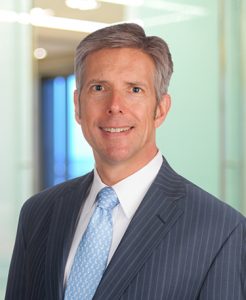OSHA issues emergency rule for healthcare employers and updates guidance for other employers
June 14, 2021By David Dubberly
On January 21, 2021, one day after his inauguration, President Biden signed an executive order directing the Occupational Safety and Health Administration (OSHA) to consider issuing a broad emergency temporary standard (ETS) on COVID-19 in the workplace. But because COVID-19 cases have decreased significantly since January, on June 10, 2021, OSHA issued an ETS applicable to healthcare employers only. For other employers, such as those in manufacturing, construction, and retail, the agency simply updated its existing voluntary guidance.
Healthcare Employers
The ETS mandates virus protections in healthcare workplaces, defined as “all settings where any employee provides healthcare services or healthcare support services,” with several exceptions. OSHA published a flow chart to help employers determine if they are covered by the ETS. Where a healthcare setting is embedded in a non-healthcare facility, such as a medical clinic located in a manufacturing plant or retail store, the ETS applies only to the embedded healthcare setting and not to the remainder of the physical location. The ETS does not apply to the provision of first aid by an employee who is not a licensed healthcare provider.
Some of the key requirements of the new rule for covered employers are to:
- Develop a COVID-19 plan (in writing for employers with more than 10 employees) that includes designation of a safety coordinator, a workplace-specific hazard assessment, and policies and procedures to minimize the risk of transmission of COVID-19 to employees.
- Limit and monitor points of entry to settings where direct patient care is provided; screen and triage patients, clients, and other visitors and non-employees; and implement patient management strategies.
- Provide and ensure that each employee wears a facemask when indoors and when occupying a vehicle with other people for work purposes; provide and ensure that employees use respirators and other personal protective equipment during exposure to people with suspected or confirmed COVID-19, and for aerosol-generating procedures on a person with suspected or confirmed COVID-19.
- Keep people at least six feet apart when indoors.
- Install cleanable or disposable physical barriers at each fixed work location in non-patient care areas where employees are not separated from other people by at least six feet.
- Follow standard practices for cleaning and disinfecting of surfaces and equipment in accordance with Centers for Disease Control and Prevention (CDC) guidelines in patient care areas, resident rooms, and for medical devices and equipment. In all other areas, clean high-touch surfaces and equipment at least once a day and provide hand rub that is at least 60 percent alcohol or provide readily accessible handwashing facilities.
- Ensure that employer-owned or controlled existing HVAC systems are used in accordance with manufacturer’s instructions and design specifications for the systems, and that air filters are rated Minimum Efficiency Reporting Value (MERV) 13 or higher if the system allows it.
- Provide reasonable time and paid leave for vaccinations and vaccine side effects.
The ETS exempts fully vaccinated employees from the facemask, physical distancing, and barrier requirements in well-defined areas if the employer determines there is no reasonable expectation that another person with suspected or confirmed COVID-19 will be present.
The ETS could take effect within days. Once it does, covered employers must comply with most of the requirements within 14 days, but will have 30 days to comply with requirements that could involve physical changes to workspaces and buildings, like those involving barriers and ventilation. The emergency rule will be limited to a duration of six months.
Pending adoption of the ETS in state plan states like South Carolina and North Carolina that have not enacted their own COVID-19 standards, employers can expect state OSHA agencies to take the requirements of the ETS into account in determining whether employers are complying with the General Duty Clause (GDC). The GDC, in effect, requires employers to provide a safe workplace for employees. State plan states must adopt standards that are “at least as effective” as OSHA’s.
Other Employers
On June 10, 2021, OSHA also updated its previously issued COVID-19 guidance that is applicable to all employers by adding references to the CDC’s recent recommendations for fully vaccinated people and addressing how to protect workers who are unvaccinated or are otherwise deemed to be at high risk of infection or serious illness.
According to the updated guidance, employers not covered by the ETS should consider implementing “multi-layered interventions” to protect workers, including:
- “Grant[ing] paid time off for employees to get vaccinated.”
- “Instruct[ing] infected, unvaccinated workers who have had close contact with someone who tested positive for COVID-19 and all workers with symptoms to stay home.”
- “Implement[ing] physical distancing for unvaccinated and otherwise at-risk workers in all communal areas.”
- “Provid[ing] unvaccinated and otherwise at-risk workers with face coverings or surgical masks, unless their work task requires a respirator or other PPE.”
- “Educat[ing] and train[ing] workers on your COVID-19 policies and procedures using accessible formats and in language they understand.”
- “Suggest[ing] that unvaccinated customers, visitors, or guests wear face coverings.”
- “Maintain[ing] ventilation systems.”
- “Perform[ing] routine cleaning and disinfection.”
- “Follow[ing] other applicable mandatory OSHA standards.”
Whether covered by the ETS or the updated guidance, employers should review the latest information from OSHA and make any necessary adjustments to their compliance programs. If you have questions or need assistance with OSHA compliance, please reach out to the Nexsen Pruet Employment and Labor Law Group.
David Dubberly chairs Nexsen Pruet’s Employment and Labor Law Group. He is certified by the South Carolina Supreme Court as a Specialist in Employment.













